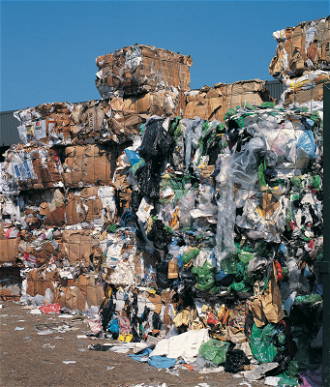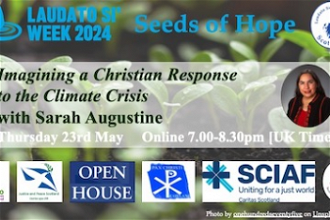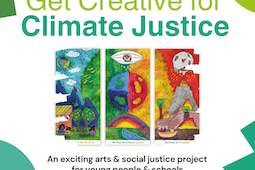What's wrong with the Fashion Trade?

Clothing dump in Atacama Desert
Source: Laudato Si' Animators UK
UK Laudato Si' Animators say the environment crisis demands urgent changes towards more sustainable lifestyles and fresh business models. Here, they spotlight the Fashion Trade as an example of an unsustainable industry in its present form.
A close look at the fashion trade gives us an overall view of human business practice in general. So, what is wrong with the fashion trade?
First of all is human exploitation. "The fashion industry is at root an exploitative system based on the exploitation of a low-paid and undervalued workforce in producing countries" says Dominique Muller at 'Labour Behind the Label'.
From the 1970s onwards, globalisation shifted clothing production from western Europe and North America to the Global South. Garment workers, who were previously direct employees of the major brands, became distant actors in complex global supply chains, so that major fashion brands no longer faced a legal obligation to pay fair wages or offer employment benefits. This strategy of moving production to areas where human rights could be ignored enabled the fashion industry to generate 2.5 trillion dollars in global revenues in 2019, making it one of the largest industries in the world.
In fact, a coalition of more than 180 human rights groups says that many of the world's leading clothing brands continue to source cotton and yarn produced through a vast state-sponsored system of detention and forced labour involving up to 1.8 million Uighur and other Turkic and Muslim people in prison camps, factories, farms and internment camps in Xinjiang. North-Western China. 'Save Uighur' lists clothing brands linked to Uighur forced labour. 'Wisestep' looks at child labourers working within the global fashion supply chain and lists offending fashion companies.
Then, there is the issue of animal cruelty. Cashmere involves goats having their hair torn out. China and Mongolia produce 90 percent of the world's supply of Cashmere and goats suffered on farms visited by PETA (People for Ethical Treatment of Animals). PETA saw workers in farms in China rip geese's down feathers out while the birds were fully conscious, leaving open, bloody wounds. 80% of the world's down and feathers used for stuffing jackets etc. comes from China. Wool is considered a natural and benign substance, but domestic sheep are bred to produce unnaturally high quantities of wool, which they cannot shed. Sheep can be violently kicked, beaten and left with gaping wounds after being sheared. To harvest Angora, workers shave or rip lengths of fur from the skin of rabbits. It's extremely stressful for the rabbit, which can suffer cuts and nicks. This is done repeatedly throughout the life of the rabbit.
And there is an impact on the environment. Cotton is very water intensive and uses high levels of pesticides and toxic chemicals that seep into earth and water supplies. It accounts for 16% of all insecticides used globally, according to 'Soil Ass'. Also, the washing, bleaching, tanning, dyeing, and treatment of leather requires hazardous chemicals which are very destructive to the environment, ecosystems, and human health. Fur factories pollute the air, soils, and water sources in the surrounding environment. The World Bank ranks the fur trade as one of world's worst industries for toxic-metal pollution, according to The Guardian.
Millions of pounds of faeces are produced annually by US mink farms alone, polluting nearby rivers and water sources. After an animal has been slaughtered, his or her skin is treated with acids, bleaches, and toxic dyes. Pesticides and insecticides are used on sheep to keep them free of parasites. Wool uses excessive amounts of water, and the wastewater contains residual toxic chemicals and is highly polluting.
Sheep release excessive amounts of methane gas into the atmosphere, with their manure also contributing to the increase in atmospheric greenhouse gases.
The clothing industry is the second most polluting industry in the world. Every year, the textile industry releases 1.2 billion tons of greenhouse gases - more than all marine shipping vessels and international flights combined - and consumes 98 million tons of oil. The waste in the fashion trade is incredible, such as the dumping of thousands of tonnes of unwanted clothing from all over the world in Chile's Atacama Desert.
It is shocking that some fashion businesses regularly burn millions of pounds of their stock, to maintain their brands' exclusivity. On 29 October 2019 an investigation by UK environmental group 'Hubbub' found that some 83% of Halloween costume materials were oil-based plastics likely to end up in a landfill. That equates to some 2,000 tons of plastic (equivalent to roughly 83 million soda bottles) used for one day's celebration.
Synthetic materials are an important issue. Acrylic, for example, is made from non-renewable petroleum and it is not biodegradable. Its production consumes excessive amounts of energy and uses chemicals which may lead to cancers through skin contact, ingestion, or inhalation. As it breaks down over hundreds of years, acrylic releases toxic chemicals and greenhouse gases into the environment.
Are there alternatives?
To change fashion into a sustainable trade, we have to change our old models of thought and action.
We need to buy less clothing, wash clothing less frequently, not use a tumble dryer and repair when it is possible to do so. When we do buy, buy better clothes that last longer, shop at charity shops, hire clothes for the special occasion. Reuse, repair, refurbish, recycle, share, lease, and so on, so that the material is used as long as possible, and when it reaches the end of its life, the material should be kept within the economy by way of a closed-loop system, whereby the product is reused in some way instead of going to landfill. Some outlets are doing this already. Live as simply as possible.
There are many companies now selling ethical fashion, and many alternatives to unsustainable fabrics.
So read the label. If the material is vegan or organic, the label usually states this. You can check how ethical the material is on the Healable page: https://healabel.com/fabrics-materials-textiles-guide
Lobby your MP for an end to fashion's environmental destruction; for addresses, see: www.writetothem.com
There are ethical, sustainable, vegan and organic alternatives to harmful fabrics. Check the label. Note that ' organic' also means no GMO seeds. The following fabrics are among the more sustainable choices.
Organic Cotton Organic cotton uses 91% less water.
Organic Hemp is fast-growing, doesn't exhaust the soil, and doesn't require pesticides.
Organic Linen requires much less water than cotton, is good for soil health, is very durable and can be grown without fertilisers. It can be planted in areas where other crops cannot thrive. Linen is also biodegradable-as long as harsh chemicals are left out of the process.
Plant leather. There are many alternative leathers on the market. For instance, Pinatex from pineapple leaves. Its production is much more sustainable than traditional leather, it requires less water and no harmful chemicals. The leftover leaf waste is recycled and used for fertiliser or biomass.
Vegan wool. Several types are available.
Reclaimed fabric - Unused, leftover fabrics from manufacturers which would otherwise be dumped.
Innovations - New, more sustainable materials are continually being developed. Here's a sample site, to show you how fast the alternative market is growing: www.materialinnovation.org/current-innovator-profiles
There are about 90 activists in the Laudato Si UK animators' network.
Facebook Link:
Follow Laudato Si UK animators on Facebook: www.facebook.com/LSIUK





















